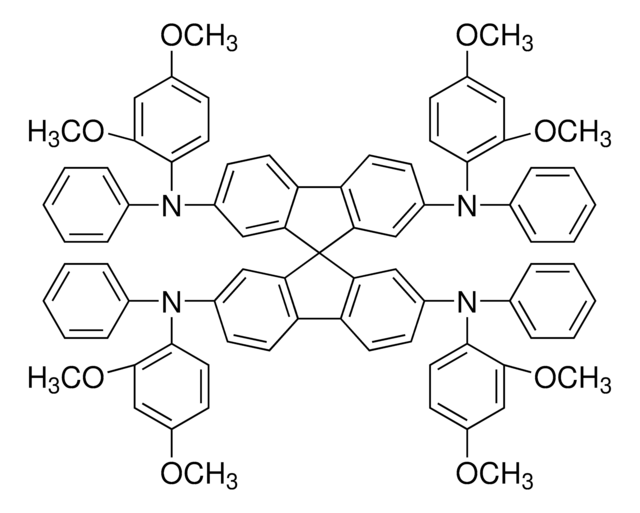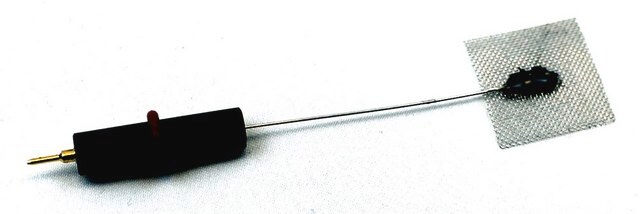791539
Titania paste, reflector
Sinônimo(s):
Greatcell Solar® WER2-O, TiO2 paste
About This Item
Produtos recomendados
descrição
Crystal Structure: > 99% anatase (analysis carried out on starting material, prior to paste manufacture)
forma
paste (white)
concentração
20.0 wt. % (+/- 1.2 wt%)
Tamanho médio da partícula
150-250 nm (scatter)
viscosidade
15000-25000 mPa.s (Analysis carried out with 20mm 4 degree cone/plate; 40 s-1)
InChI
1S/2O.Ti
chave InChI
GWEVSGVZZGPLCZ-UHFFFAOYSA-N
Descrição geral
Aplicação
Scattering Titania Paste contains highly dispersed anatase scattering particles (150nm to 250nm). This paste produces a non-active scattering layer when applied onto a pre-printed active layer.
After drying; this paste must be fired – together with the pre-printed active layers – at or above 500°C. This results in an opaque sintered layer; with a thickness of ~3μm for one printed layer; when using a 90T mesh screen.
Storage: Store in the dark at 20°C
Informações legais
Greatcell Solar® is a registered trademark of Greatcell Solar
Palavra indicadora
Warning
Frases de perigo
Declarações de precaução
Classificações de perigo
Eye Irrit. 2 - Skin Irrit. 2
Código de classe de armazenamento
10 - Combustible liquids
Classe de risco de água (WGK)
WGK 1
Ponto de fulgor (°F)
195.8 °F
Ponto de fulgor (°C)
91 °C
Escolha uma das versões mais recentes:
Certificados de análise (COA)
Não está vendo a versão correta?
Se precisar de uma versão específica, você pode procurar um certificado específico pelo número do lote ou da remessa.
Já possui este produto?
Encontre a documentação dos produtos que você adquiriu recentemente na biblioteca de documentos.
Os clientes também visualizaram
Artigos
Few Monolayer Atomic Layer Deposition (ALD) on Surfaces and Interfaces for Energy Applications
Dye-sensitized solar cells (DSCs) are 3rd generation solar cells combining the promise of high efficiency with low production costs.
Organic photovoltaics (OPVs) represent a low-cost, lightweight, and scalable alternative to conventional solar cells. While significant progress has been made in the development of conventional bulk heterojunction cells, new approaches are required to achieve the performance and stability necessary to enable commercially successful OPVs.
While dye sensitization as the basis for color photography has been accepted for a very long time,1 attempts to use this principle for the conversion of solar light to electricity generally had resulted only in very low photocurrents, below 100 nA/cm
Nossa equipe de cientistas tem experiência em todas as áreas de pesquisa, incluindo Life Sciences, ciência de materiais, síntese química, cromatografia, química analítica e muitas outras.
Entre em contato com a assistência técnica






![Dipyrazino[2,3-f:2′,3′-h]quinoxaline-2,3,6,7,10,11-hexacarbonitrile 95% (HPLC)](/deepweb/assets/sigmaaldrich/product/structures/151/558/c0e2c95f-5228-4864-a7a5-4b9765a19840/640/c0e2c95f-5228-4864-a7a5-4b9765a19840.png)


